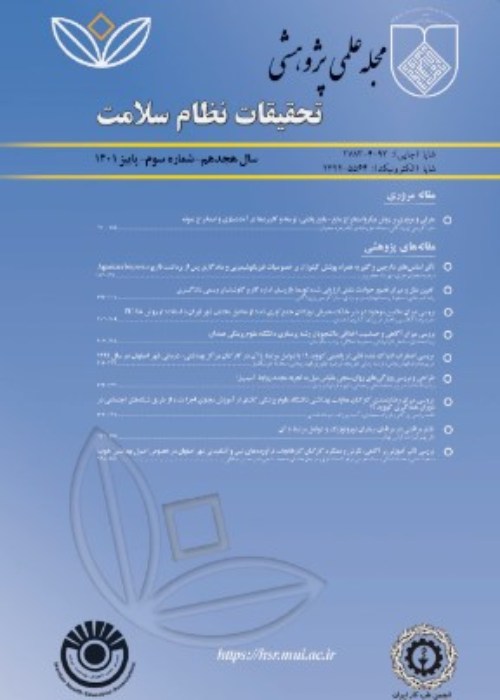The effect of educational intervention on knowledge and attitude of students in Izeh about cardiovascular disease: Application of the Health Belief Model
Author(s):
Abstract:
Introduction
The studies indicate that the majority of healthy and unhealthy behaviors formed during adolescence and they are considered educable. Therefore, investing in the health and education of young people toward prevention of cardiovascular disease is considered as the underlying action. This study’s aim was to investigate the effect of educational intervention on knowledge and attitude of students regarding cardiovascular diseases using constructs of Health Belief Model. Methods
In this pre-post quasi experimental study that conducted throughout high schools in Izeh City, the subjects were 196 students (79 girls and 117 boys) who were selected through the multistage random sampling method; A self-designed questionnaire was prepared on the basis of the specified goals of study, and its validity and reliability were confirmed. The questionnaire was filled out in two stages, before and after the intervention. The obtained data were analyzed by SPSS20 software, descriptive statistics & T-test, Pearson and Spearman correlation statistical tests at the significant level of α=0.05. Results
The mean of the total score of the students’ knowledge about risk factors of Cardiovascular Diseases was 12.95±4.18 before the intervention and 23.85±4.48 after the intervention (p<0.001). The mean of the student’ attitude also increased from 68.10±9.21 to 82.44±8.27 (p<0.001). The mean of all model constructs (perceived susceptibility, perceived severity, perceived benefits, perceived barriers, perceived self-efficacy and cues to action) before and after the intervention showed significant difference (p <0.001).Conclusion
The results of this study, verifies the effectiveness of educational interventions based on health belief model to promote level of knowledge and the effect on student's perceived susceptibility, perceived severity, perceived benefits, perceived barriers, perceived self-efficacy and cues to action in relation to heart disease and their prevention methods. Therefore, to improve the cardiovascular protective behaviors and ultimately, prevention of being infected with these diseases at older ages, applying educational program based on this model should be considered as an educational priority in schools by authorities and managers of education and health.Keywords:
Language:
Persian
Published:
Journal of Health System Research, Volume:11 Issue: 2, 2015
Page:
239
magiran.com/p1480693
دانلود و مطالعه متن این مقاله با یکی از روشهای زیر امکان پذیر است:
اشتراک شخصی
با عضویت و پرداخت آنلاین حق اشتراک یکساله به مبلغ 1,390,000ريال میتوانید 70 عنوان مطلب دانلود کنید!
اشتراک سازمانی
به کتابخانه دانشگاه یا محل کار خود پیشنهاد کنید تا اشتراک سازمانی این پایگاه را برای دسترسی نامحدود همه کاربران به متن مطالب تهیه نمایند!
توجه!
- حق عضویت دریافتی صرف حمایت از نشریات عضو و نگهداری، تکمیل و توسعه مگیران میشود.
- پرداخت حق اشتراک و دانلود مقالات اجازه بازنشر آن در سایر رسانههای چاپی و دیجیتال را به کاربر نمیدهد.
دسترسی سراسری کاربران دانشگاه پیام نور!
اعضای هیئت علمی و دانشجویان دانشگاه پیام نور در سراسر کشور، در صورت ثبت نام با ایمیل دانشگاهی، تا پایان فروردین ماه 1403 به مقالات سایت دسترسی خواهند داشت!
In order to view content subscription is required
Personal subscription
Subscribe magiran.com for 70 € euros via PayPal and download 70 articles during a year.
Organization subscription
Please contact us to subscribe your university or library for unlimited access!


